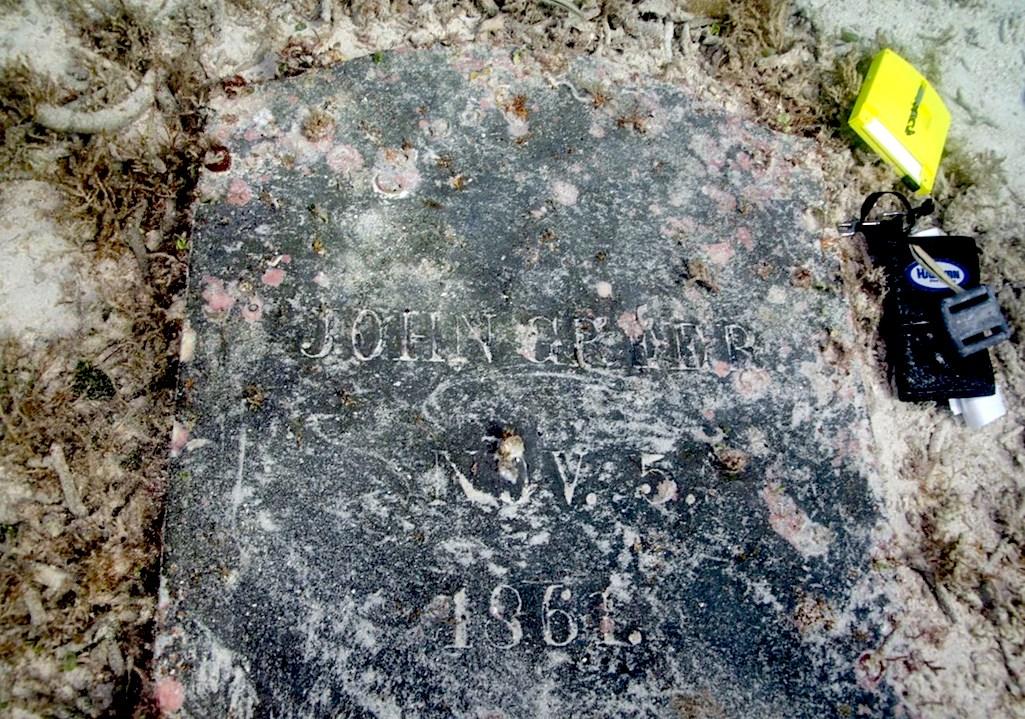
A water color captured an island with a hospital in the Dry Tortugas/NPS archives
A chapter of 19th century history at Dry Tortugas National Park has been discovered underwater on a submerged island near Garden Key that once housed a quarantine hospital and cemetery.
While only one grave has been identified so far, historical records indicate that dozens of people, mostly U.S. soldiers stationed at Fort Jefferson, may have been buried there, park staff said in a release. The small quarantine hospital was used to treat yellow fever patients at the fort between 1890 and 1900. The cemetery has been identified as the Fort Jefferson Post Cemetery.
In August 2022, park cultural resources staff, assisted by members of the National Park Service’s Submerged Resources Center, the Southeast Archeological Center, and a University of Miami graduate student conducted a survey that led to the findings. Since that time, they have been researching historical records to learn more about the site and the individual.
According to historical research, dozens of people were interred in the Fort Jefferson Post Cemetery, and while most of them were military members serving or imprisoned at the Fort, several were civilians. One of those civilians, John Greer, was employed as a laborer at the fort and died there on Nov. 5, 1861. While the details surrounding his death are unclear, his grave, located during the survey, was prominently marked with a large slab of greywacke, the same material used to construct the first floor of Fort Jefferson. The slab was carved into the shape of a headstone and inscribed with his name and date of death.
“This intriguing find highlights the potential for untold stories in Dry Tortugas National Park, both above and below the water,” said Josh Marano, maritime archaeologist for the south Florida national parks and project director for the survey. “Although much of the history of Fort Jefferson focuses on the fortification itself and some of its infamous prisoners, we are actively working to tell the stories of the enslaved people, women, children and civilian laborers.”

John Greer's headstone also was discovered by divers/NPS
While mostly known for its use as a military prison during the American Civil War, the islands and waters surrounding Fort Jefferson south of the Florida Keys were also used for a naval coaling outpost, lighthouse station, naval hospital, quarantine facility, and more generally for safe harbor and military training. As the population of Fort Jefferson swelled with military personnel, prisoners, enslaved people, engineers, support staff, laborers and their families, the risk of deadly communicable diseases, particularly the mosquito-borne yellow fever, drastically increased. Major outbreaks of disease on the island exacted a heavy toll on those staying there, killing dozens throughout the 1860s and 1870s.
Given the increasing population and lack of space on Garden Key, several of the nearby islands were equipped with small structures for use as quarantine hospitals in the 1860s. While the plainly built facilities on the islands were considered minimal at the time, the transfer of sick and dying patients to these small islands, isolated from the congested Fort Jefferson, likely saved hundreds from a similar fate. Although the use of many of the quarantine hospitals on the surrounding islands ceased after Fort Jefferson was abandoned in the 1873, the fort’s future use by the U.S. Marine Hospital Service between 1890 and 1900 again required the development of an isolation hospital on one of the keys.
The find also highlights the impacts of climate change on resources in the Dry Tortugas. While the facilities identified in this survey were originally built on dry land, the dynamic conditions caused many of the islands to move over time. Climate change and major storm events have even caused some islands to settle and erode beneath the waves as conditions change.

A closeup of John Greer's headstone/NPS
Efforts to learn more about Greer and other individuals interred on the now submerged island are ongoing. The archaeological remains of the hospital, as well as the surrounding cemetery, have been documented as an archaeological resource and will be routinely monitored by members of the South Florida National Parks Cultural Resources Program as part of regular park operations. Additional information regarding the discovery and future research will be made available to the public through the park website, social media and interpretive programs.

 Support Essential Coverage of Essential Places
Support Essential Coverage of Essential Places




Add comment